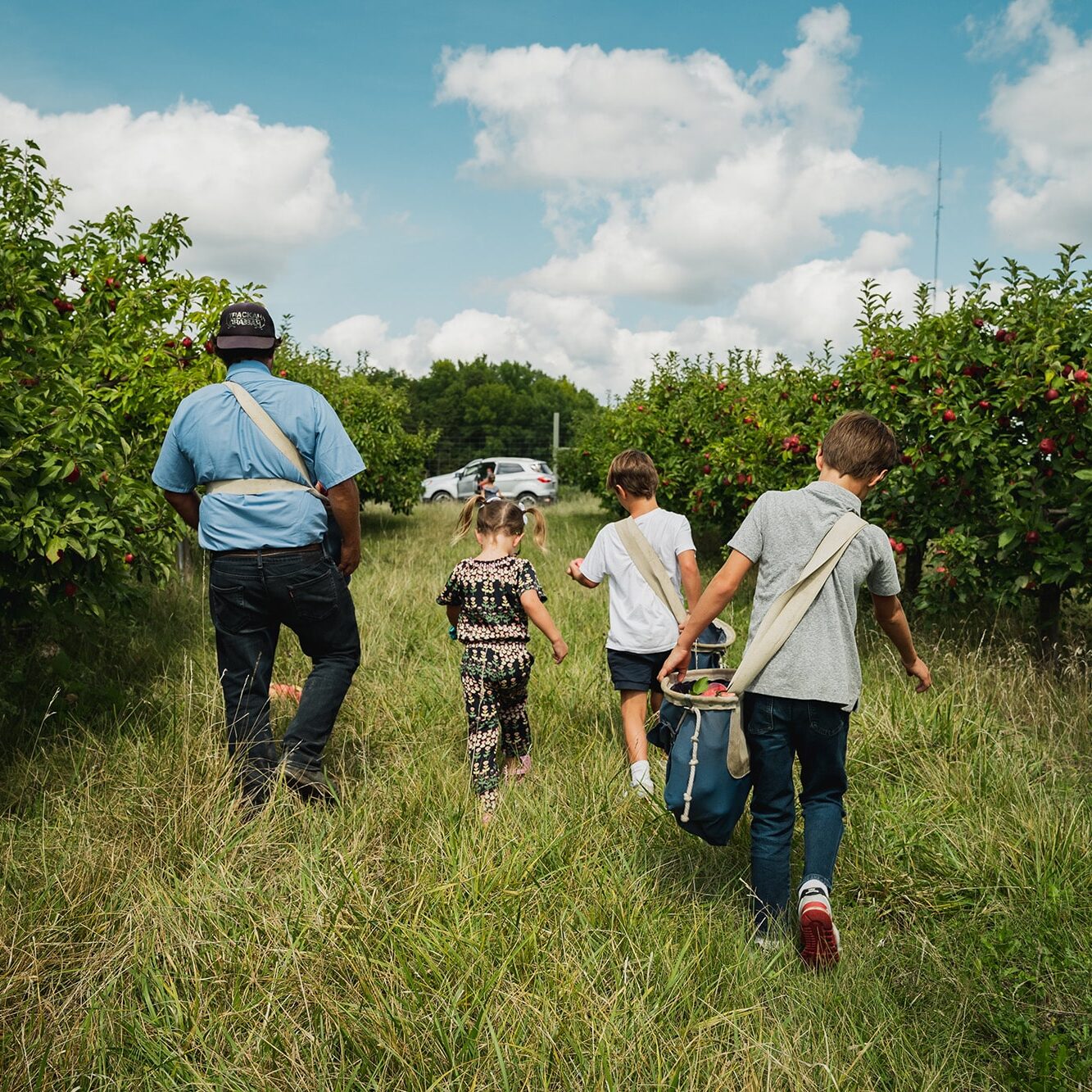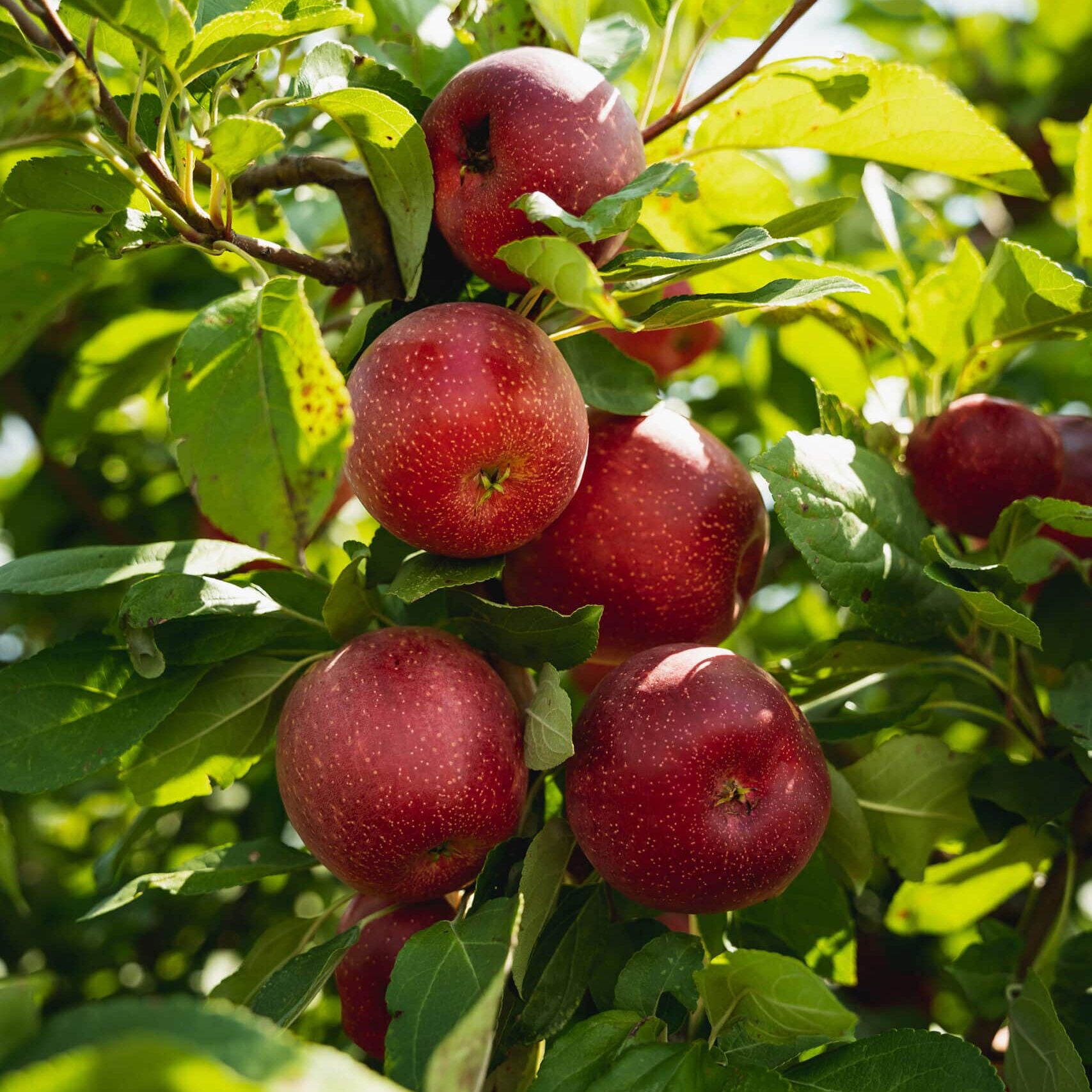The Most Consumed Fruit in the U.S. is Apples
It is also one of the easiest fruits to eat. All you need to do is bite into one. However, there are so many ways to enjoy apples. They can be eaten raw, sliced up as a snack, baked or cooked, and the list goes on!
Farmers across the U.S. grow 240 million bushels of apples each year. People enjoy their pleasing shape and color, their firm and juicy texture, and their sweet, or tart, taste. Apples make for healthy eating. They are packed with vitamin A, vitamin C, thiamine, riboflavine, calcium, phosphorous, and potassium. They are also a great source of fiber.
Apples are popular around the world as well and hold meaning for many cultures. They appear as symbols in paintings and stories throughout history.
Types of Apples
There are many different types of apples—over 7500 varieties! Over 200 varieties are grown in the U.S. Some of the most popular apples in the U.S. are Red Delicious, Gala, Granny Smith, Fuji, Golden Delicious, Honey Crisp, McIntosh, Rome, Cripps, Pink Lady and Empire.
Because of Minnesota’s harsh climate, not just any apple tree can grow in the state. Trees need to be able to survive average winter temperatures that range from 15°F to 25°F and even colder. Through years of selecting and testing different apple trees, scientists at the University of Minnesota have developed over 29 unique varieties that can grow well in our cold winter climate. Apples are categorized into early, mid-, or late season, depending on when they become ripe.
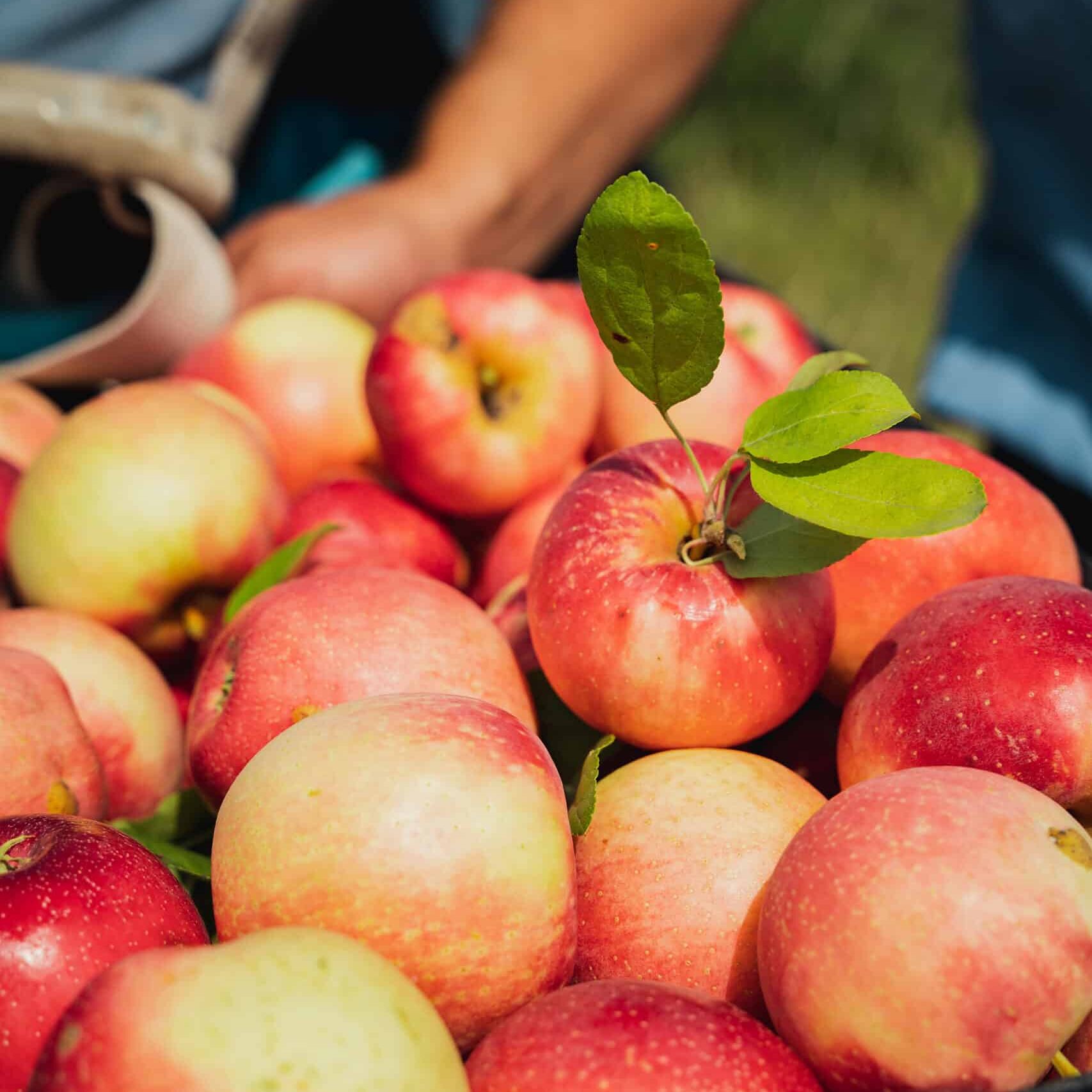
Early Season Apples
Apples that begin ripening in August are:
- Beacon
- Centennial Crabapple
- First Kiss®
- Rave®
- State Fair
- SweeTango®
- Zestar!®
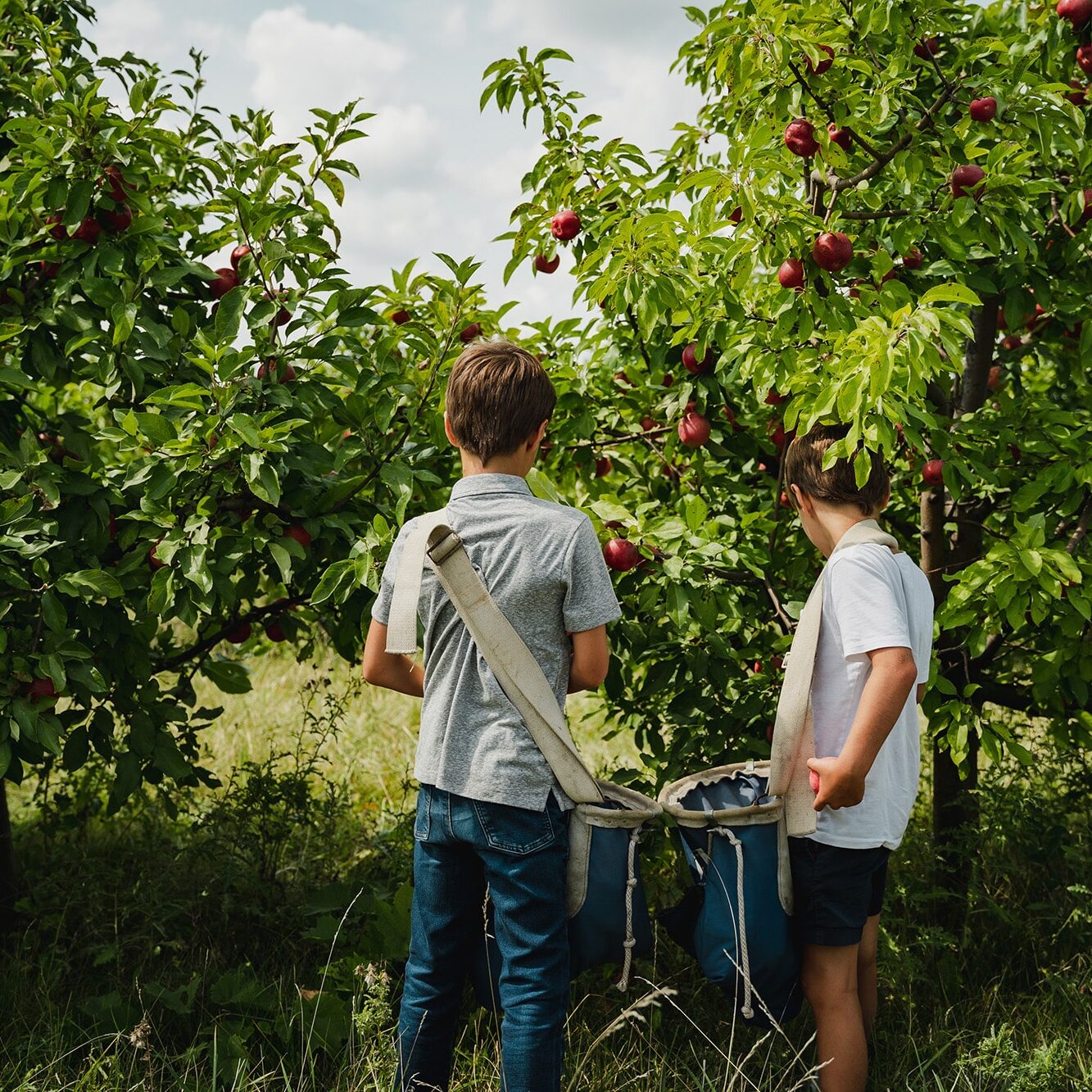
Mid Season Apples
These apples begin ripening in early September:
- Chestnut Crabapple
- Red Baron
- Sweet Sixteen
- Triumph®
- Honeycrisp
- Kudos® —the newest variety of Minnesota-developed apple, which is expected to produce fruit by 2026.
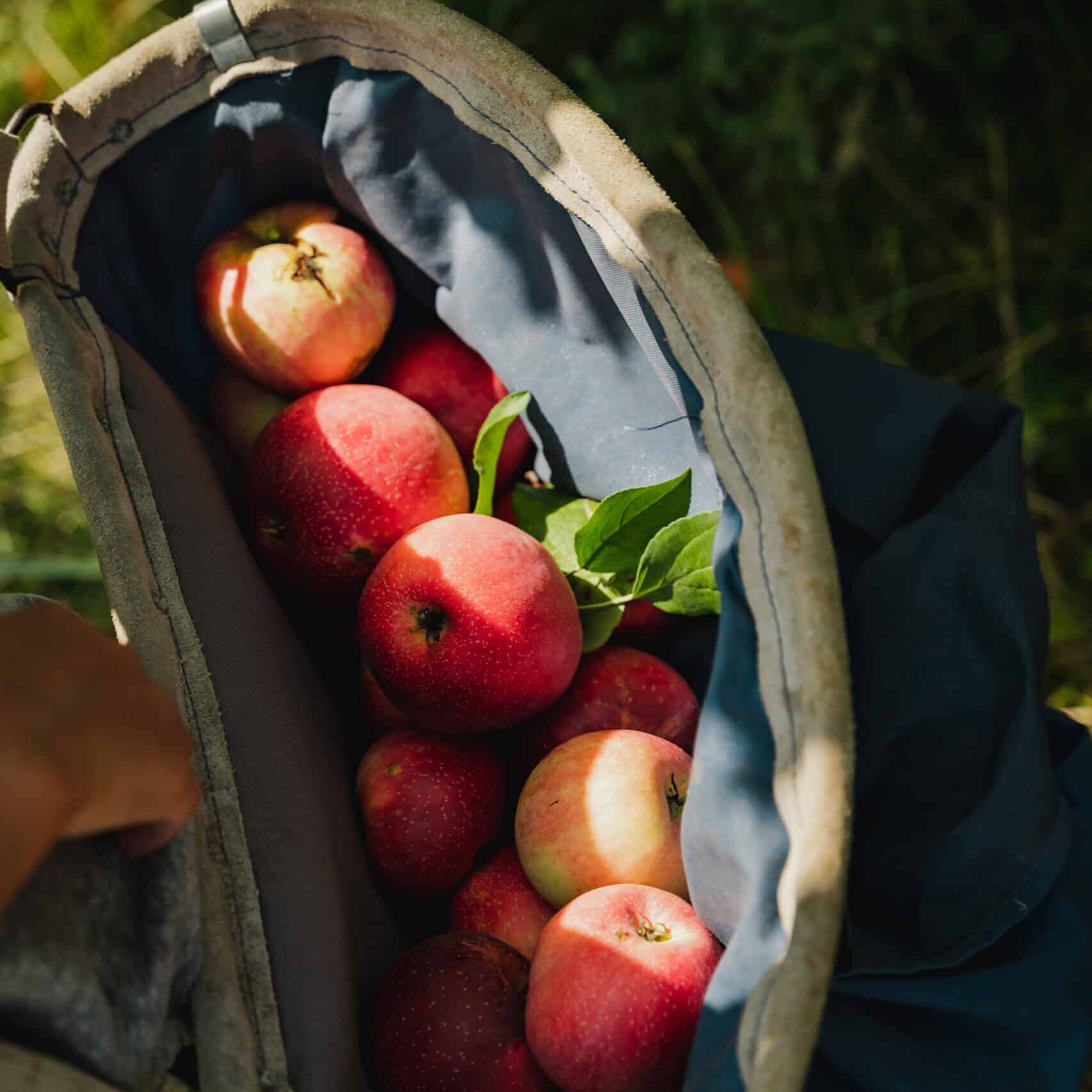
Late Season Apples
These apples begin ripening in late September:
- Honeygold
- Haralson
- Frostbite™
- Regent
- SnowSweet®
- Fireside/Connell Red
- Keepsake
- Prairie Spy
Growing Apples
Like many fruits, apples have seeds at their core. If you were to plant one of those seeds, an apple tree would grow. But it might look and taste completely different than the apple it came from. That’s because each seed has its own unique genetic material.
Farmers want to be able to grow the same type of apple each season. So instead of planting apple seeds, commercial farmers use a growing technique called grafting.
What is Grafting?
Grafting is the process of combining a “cultivar” or specific type of tree with a rootstock of another that can support the tree. A cut is made into the rootstock. Next, a small bud is inserted into the cut. The bud fuses with the rootstock to create a new tree! This process ensures that the tree will produce exactly the same type of fruit each time.
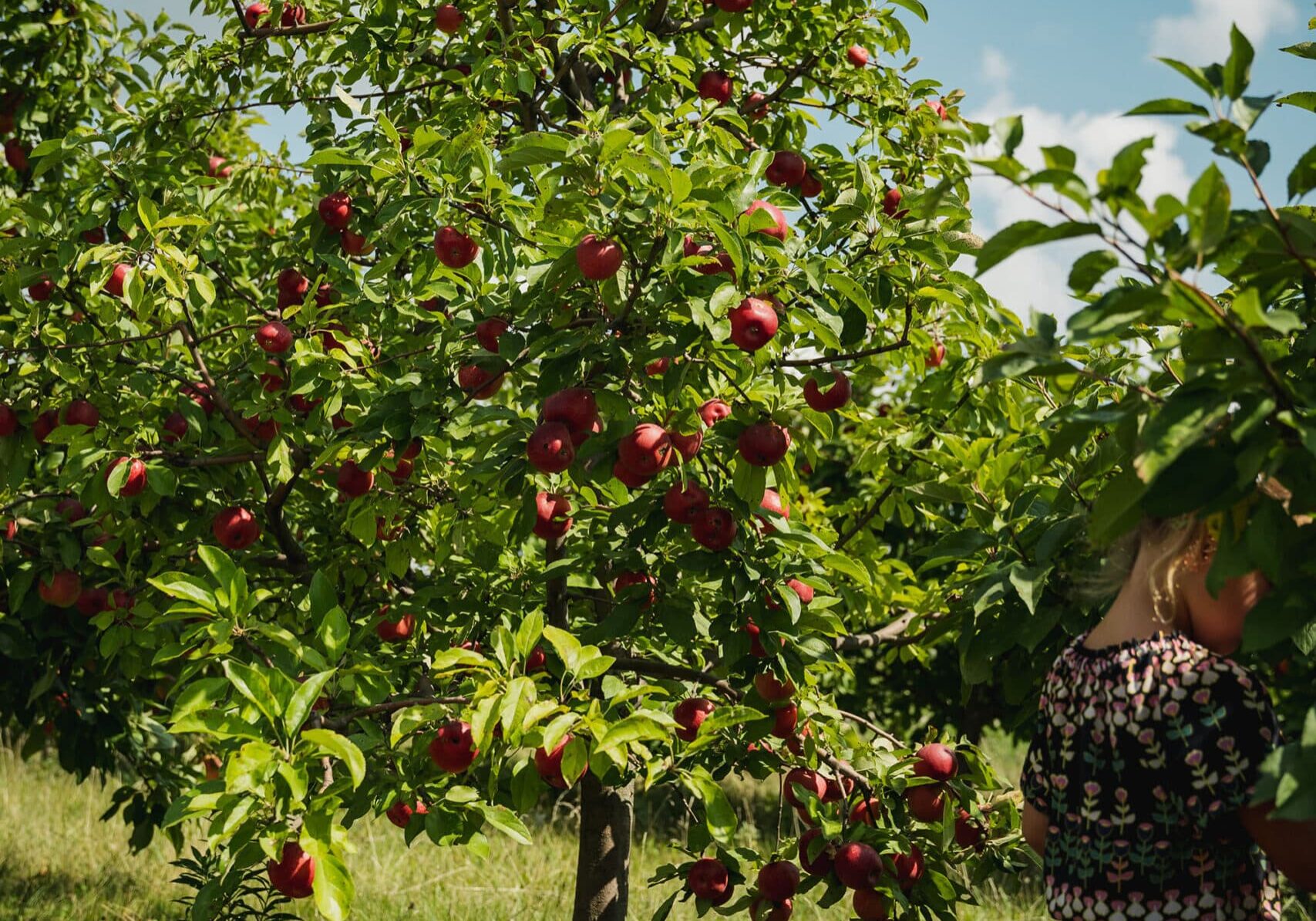
Once a tree has been grafted, it produces blossoms. The blossoms need to be cross pollinated, usually by bees or other pollinating insects. Once the flowers have been pollinated they develop into apples.
Apples continue to grow and change color until they ripen.
It takes between 80-105 days for apples to grow. The earliest apples ripen in August, and the latest in late October. When the apples are even in color, firm to the touch, and drop easily from the tree, they are ripe and ready to pick.
Harvesting Apples
In Europe, apples that are grown for cider might be harvested mechanically. Most apples grown in the United States are picked by hand because apples are quite fragile, and bruise easily. Apple pickers use a special harvesting bucket, with straps on top, a soft lining, and a bag or ‘skirt’ rolled into the bottom. Pickers strap on the bucket, which helps them continue to pick the apples as the bucket get heavy. When the bucket is full, it can be unrolled from the bottom to gently release the apples without damaging them.
Some apples are sold right away at farm stands. Others are packed to sell at nearby stores or farmer’s markets. Many apples are refrigerated, and others are placed in controlled atmosphere storage. This is a special room that maintains the right temperature, light, and other conditions so that the apples do not spoil and stay fresher longer. It’s as if the apples are asleep. Some apples can be stored for as long as 7 months or longer. From storage or refrigeration, apples are then packed and shipped to stores across the country.
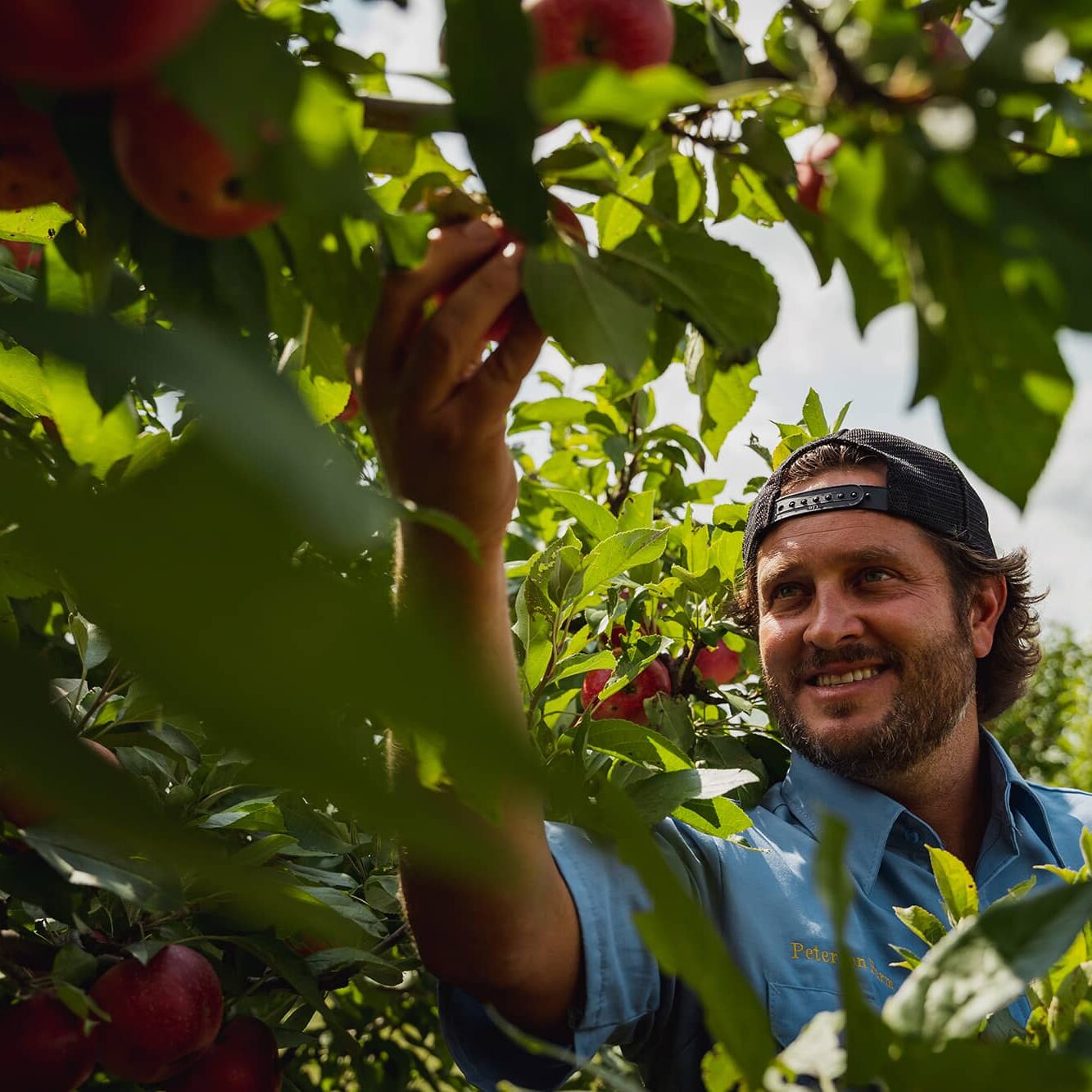
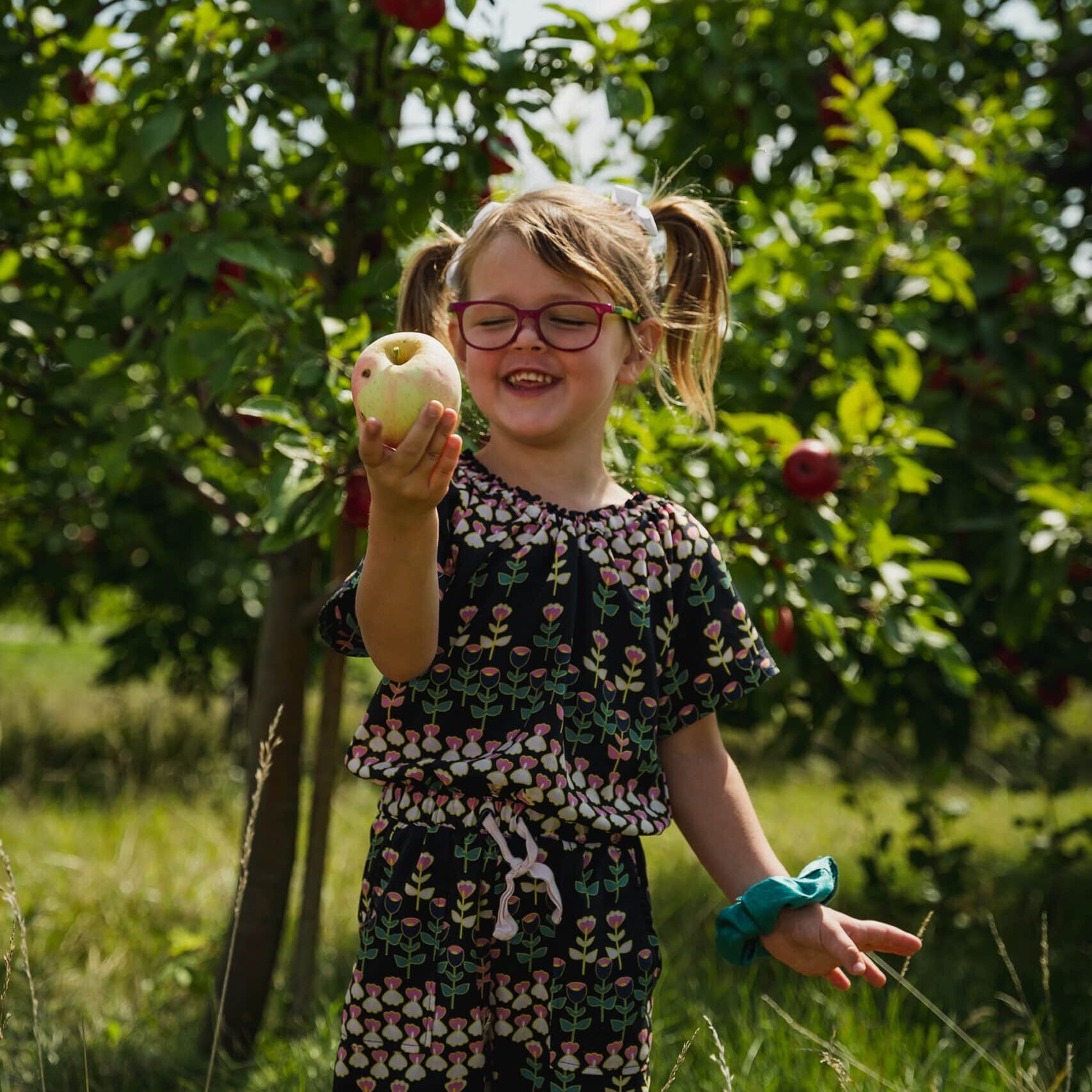
Apples in Minnesota
There are 20 million pounds of apples grown in Minnesota each year. And, Minnesota has 330,660 acres of apples growing in the state.
Apples are celebrated each September at the annual Applefest celebration in La Crescent, Minnesota, the apple capital of the state.
The Honeycrisp apple was in development for 31 years! It became the official state fruit of Minnesota in 2006. It is the highest-selling variety of apple in the United States.

